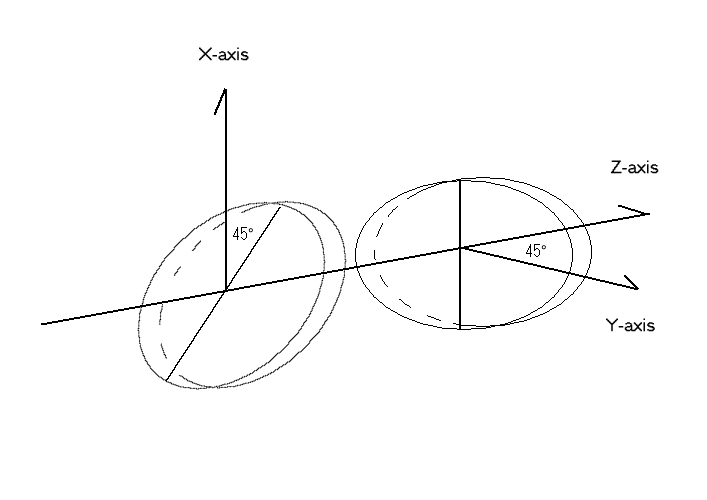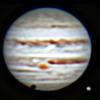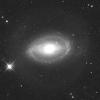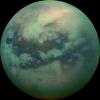
Innovations Foresight On-Axis Guider (ONAG)
#1

Posted 05 December 2011 - 05:11 PM
#2

Posted 13 December 2011 - 11:06 PM
Thank you for this excellent review. I am really interested in this type of set up, as I use a high quality OAG on a 2.3 M focal lenght SCT (C9.25).
The greatest challenges my set up has / had are:
1. Finding a suitable guide star
2. Focusing the guide camera and
3. Dealing with COMA on the guider
The ONAG from your review makes guide star selection a lot simpler and COMA is no worse then your orignal OTA.
But how simple is it to precision focus the guide camera once the main imaging camera has been precisely focused? Are there mechanical aids to precision (almost micro focus the guide camera) - like a threaded tube moving the guide camera in / out a few microns at a time?
For my set up (OAG) I focused the main imager using a Bhatinov mask on Antares - dead easy with a electronic, PC controlled focuser in the imaging train. The guide camera was far more challenging to focus.
In the end I put Jupiter in the OAG's guide camera's main field of view and used the Bhatinov mask again. Then it took an awfully painful two hours of rotten adjust by hand (loosen one screw on a Lumicon giant OAG, slide guide camera in or out a fraction of a mm) and try again. Only jupiter was bright enough to cast a differaction pattern on the OAG's guide camera.
A threading mechanisms to micro shift the guide camera once you have almost achieved focus was desperately needed (an a $5 oversight had the OAG manufacturer realised the need for it!).
So how did you achieve precise focus on the guide camera and was the ONAG machined with forethought to simply this frustratingly challenging set up task?
Many thanks,
Matthew
#3

Posted 27 December 2011 - 07:02 AM
#4

Posted 31 December 2011 - 01:39 PM
- P Soper likes this
#5

Posted 07 January 2012 - 09:10 PM
Sorry for the late reply as I did not check in for a while. I did not have any great difficulty achieving focus. I have a CFW and camera on the image side and this caused a certain amount of distance to be needed to get the guider at the same focus point. I made a rough measurement with a small ruler to approximate the focus position of the camera image plane and set the guide camera to the same distance, estimating from the center of the ONAG. I selected one of the T-ring extension tubes that came with the ONAG and then used the slider mechanism to make the final adjustment. I then pointed the scope at a bright star, got a good focus on the main camera, and then adjusted the focus tube to get a good focus on the guider. There is a little trial and error needed, but if you use a short exposure time in continuous exposure mode, and slightly tension the thumbscrews holding the guide focus tube, you can slide it back and forth and tighten it while watching the screen and get a really good focus.
BTW, I gave up on an OAG myself when I was imaging like you with an SCT (an LX200R). I really had problems with a pickoff-shadow on the imager if I slid the pickoff in too far, but out farther there were virtually no stars usable for guiding and the ones I could get were more like arcs than circles.
Frank
#6

Posted 14 January 2012 - 06:55 PM
Thanks for the reply - so you had to do precision adjustments using only your hands to try and slide the guide camera in or out a fraction of a mm (much like I had to do with my simple OAG)? Which is possible but very time consuming.
Why can't OAG or ONAG manufacturers provide for micro focusing on one of the attached camera tubes by simply inserting a threaded microfocuser?
An example would be http://www.telescope...ml#schneckenfok
#7

Posted 17 January 2012 - 10:28 PM
Or maybe I misunderstood what you meant by you moved the slider in and out - are you confirming there is a mechanism for very fine focusing the guide camera? Is that what the slider you mention is?
BTW I mention this thread and the ONAG to one of our folk in the Australian Astronomy (David) from Ice In Space - and it looks like he'll be the first person in our country to buy onefor his 14" ota - lucky guy!
#8

Posted 18 January 2012 - 01:18 PM
You have a valid point about making the guider focus easy.
The ONAG uses a compression ring associated with a drawtube for the guider camera as the primary mechanism for focusing it.
However the T-mount (T-threaded) connection for the guider (at the ONAG’s guider port GP) has been designed with extra threads in order to be able to adjust the guider in a more precise way, if and when needed, the low profile T-ring (provided) will then lock the guider in place. The motion of the T-mount thread is 0.75mm per turn.
From what I read this is consistent with your suggestion, am I right?
So far user feedbacks and my experience have found the guider focusing is pretty simple and fast to do, for instance you can read Ken’s feedback on that matter on our website (http://www.innovatio...er_feedback.htm).
Of course I would certainly consider more complex mechanisms for focusing the guider, however there is also a need to keep the back focus minimum. Any suggestions and comments are most welcome to improve the product, nothing is ever perect.
Clear skies!
#9

Posted 15 April 2012 - 12:26 AM
Jose Rivera
Central Florida Astronomical Society
#10

Posted 15 April 2012 - 09:31 PM
#11

Posted 27 April 2012 - 03:18 PM
#12

Posted 28 April 2012 - 01:18 AM
So that would be equivalent to imaging at double the focal ratio of the telescope, correct?. I would have to give it a try someday.
No. But let me premise this all with I've never used one before, so this is just my understanding. Someone can probably correct me where I'm wrong... Think of it like a diagonal mirror. Normally the diagonal directs almost 100% of the light at a 90 degree angle and 0% straight through. Now pretend that the diagonal is partly transparent, and about 50% goes up and 50% goes straight through. This would be pretty close in concept but would have the problem of cutting the visible light at your imager/eyepiece in half. Instead the ONAG puts nearly 100% of the visible light through, BUT the deep red/ir it redirects ~100%. This way you end up with good guide stars across the whole field and don't cut your imaging time down.
#13

Posted 27 December 2012 - 02:28 AM
I wonder how many folk here have tried one and with what results?
A recent scan on google turned up this interesting post from October 2003 http://www5f.biglobe...aka/onaxis.html
They stated "the thickness of the Beam Splitter causes astigmatism because of its tilt, so the on-axis has been never developed yet. See the second image, you see the oblate stars near the focus point by single Beam Splitter ...To cancel this astigmatism, another tilt Beam Splitter, so-called astigmatism-correcting plate(maybe as-correcting plate), is needed. I made a prototype on-axis guider and tested taking images. One of them is at bottom de-focusing image in the upper image. It was successful, and I convinced that the on-axis guider was most convenient for tracking stars."
He posted this link on the beam splitter's astigmatism

and the double beam splitter he refers to is depicted

To my question - is this something Foresight or buyers have investigated and have a view on?
Qu 1. How much astigmatism does the beam splitter they use produce (when focused correctly)
Qu 2. To Foresight really - have they tried a dual splitter as designed above and seen a marked improvement in astigmatism management?
Many thanks,
Matthew
#14

Posted 27 December 2012 - 08:09 AM
I was under the impression that the astigmatism was only seen on the guide camera. The imaging camera is just getting the light bounced off of a mirror, so there is no astigmatism introduced. However, since the light is passing through the mirror to the guide camera and the mirror is tilted you see the stars as astigmatic.
At least that is my understanding, from reading a few reviews of this device.
I also found an article where a gent converted an old vixen 2" diagonal to something very similar to this, with a mirror he bought from edmund scientific. It only worked ok due to the construction techniques used, but it was far less expensive.
Mike
#15

Posted 27 December 2012 - 05:36 PM
That is my understanding too, the astigmatism is seen on the guiders light path, unless a double beam splitter is used as the diagram above depicts.
So Qu 1. still stands - how much astigmatism is introduced (and is it an even spread that will allow a centroid calculation used by a guide program to be run effectively).
So this lends one to ask does matter significantly or is it barely discernible? If the centroid of the star can still be reliably measured (something I believe PHD can do with soft or bloated stars, not sure about how it handles a range of ovals depending on how the X and Y axis (i.e. where the hump is) shifts?) - its not too worrying. I just like attainable precision - were its possible. Ponder though if for PHD or MaximDL if its needed? I would like to hear the manufacturers views, as the imaging results look very good - I suppose everything is quite okay. I would like to see some information on this (shots of the guide camera on a bright star around and at the focal point). So the user understand exactly what to expect when they buy the product!
Regards,
Matthew
#16

Posted 22 April 2013 - 02:09 PM
However we never sold any because ours customers did not need this to achieve a good tracking. Auto guiding algorithms are based to centroids and are not much sensitive to guide star deformation, unless it is so big then the SNR drops dramatically (like extreme coma coming from off-axis imaging on SCT or a like).
You can find more information on that matter on our FAQ page, question/answer #3:
http://innovationsfo...ht.com/faqs.htm
Although the FWHM is larger for the guide start the ½ FD is very close and the SNR is preserved leading to good tracking with the ONAG without any corrector on its GP. There is also the same feedback from Dennis’s article on its test review of the ONAG (Sky and telescope, December 2012).
The fact that at best focus the guide star looks like a tight small cross is in fact a feature that you can use to make guide star focus easier and handy.
The new larger ONAG XT comes in standard with build-in corrector in the GP. This has been a request for applications involving NIR imaging from the GP, while guiding in the visible from the ONAG imager port (IP).
Finally I would like to make one more comment about guiding in NIR, see more at:
http://innovationsfo...NIRGuiding.htm.
Seeing is reduced at longer wavelengths and this provides a unique opportunity to improve guided tracking, as see in the M83 example on a 32” f/6 scope shown in the link above.
I hope this helps.
Clear skies!
#17

Posted 22 April 2013 - 07:03 PM
Link to AstroBin M101
#18

Posted 10 April 2014 - 10:27 AM
Not a happy camper to submit my CCARD number to a company and after 3 days, numerous emails and phone calls, I can't get a response from the company....
#19

Posted 21 April 2014 - 06:49 PM
I am not sure what was wrong. We replied to your emaif of April 9th the next day, but maybe it has been lost or identified as SPAM, here is a copy below:
Dave,
We are shipping today.
Best Regards,
Tom Cockley
Innovations Foresight LLC
225 Cadwalader Ave
Elkins Park, PA 19027-2020 USA
www.innovationsforesight.com
215-884-1101
-------- Original message --------
From: form-handler@server-apps.com
Date:04/09/2014 5:05 PM (GMT-05:00)
To: customerservice@innovationsforesight.com
Subject: Customer Contact from Innovations Foresight web site.
MessageType: Purchase
Comments: Hello,
I placed and order for the ONAG XT yesterday and recieved a confirmation email, but did not receive any information on expected ship dates. Can you provide that to me?
Order Number
..........81
Order Date and Time
04/08/2014 03:39:32 PM
Thanks,
Dave Hudson
You should have got your product by now, please conact me directly otherwise.
Besrt Regards, Dr. Gaston Baudat
#20

Posted 04 June 2014 - 06:08 PM
#21

Posted 22 December 2014 - 12:35 PM
Hi Everyone -
Boy do I feel terrible! For some reason I never got notifications from CN regarding replies to my post. Luckily a fellow member of my club saw this post and sent me an offline message requesting an update.
So first off, let me update the "concern" i posted from Innovation Foresight. It looks like it was just a timing issue. They did reply and I received the ONAG XT in short order! They actually called me to make sure everything was good to go and were great to deal with.
Now on to the review of the ONAG XT! Short Answer (spolier alert): ITS AWESOME!!
I am a fairly technical person and with that causes me to be fairly critical of "poor design". This is honestly one of the first pieces of kit where I went "WOW - this is some of the best engineering i've ever seen!"
Quality of materials: Excellent. The unit is solid and well built. It is not flimsy and feels very sturdy while also having adequate "clamping" where needed to hold imagers, guiders, etc. It also has "rough" surfaces for grip in all the right places.
Overall Design: Simply put - Spot On. I have had about every piece of kit for a telescope that you can think of from off-axis guiders to all sorts of camera adapters and contraptions. My biggest complaint has always been how difficult it is to align or adjust them. The ONAG XT is perfectly designed in this regard! It is a dream to align and adjust. It has a slider system to move the guide camera around and an extending neck to aid in final focus alignment. This thing really is a dream to use!
Optics and Usage: Again, I've used a lot of kit and I usually can count on at least 2 to 3 imaging sessions "ruined" when I am trying a new piece of gear. This is not an exaggeration: On my first outing, I hooked up the ONAG XT and was all adjusted and imaging in 15 minutes. Done, no fiddling, no downstream issues, this thing just worked like a charm! The images that hit my camera do not look any different than when I image straight through. Quality is good and the full chip (both DSLR and big chip CCD) is fully filled just as when I do prime without any adapters.
Guiding: Worked perfect! I actually had less "star jitter" and my autoguider (PHD) seemed to love looking through the ONAG XT. It stayed locked on and I had no problem picking up faint stars. The fact that the ONAG XT is such a dream to adjust (the guide camera sliders), made it really easy to center a star or move it around on my guide camera if needed. I had a nice, full field of view.
Additional Benefits: I haven't tried it yet, but i am really intrigued by the aspect of being able to use this for autofocusing as well. You can see their website for more about.
My Gear: For my use/testing, I used a Canon 60D DSLR and Celestron Nighscape (Kodak 10100 chip) for the imager and an Orion G3 for the guide camera using PHD guiding. A friend of mine used this on his rig with a Canon Ti as the imager and the ZWO MC120 as the guide camera. I do not think you will have any issues with picking up stars with a cheaper guider like the ubiquitous SSAG. And as a further testament, my friend went and bought one of his own after trying mine at the star party!
Bottom Line: This is well worth the money. I absolutely love the ONAG XT. It works so well, and makes it so much easier to get up and running. Instead of having to put on my guide scope, put on my guide camera, and focus all of that independently, I simply put on the ONAG XT, plop on my imaging camera, plop in the guide camera and start focusing!
One Caveat: One thing to remember is the wavelength the guide camera is working with. You really can't use this during the day to do focus. However, I did find that the red "airplane warning" lights that are on building seem to work! I live in DC and was able to use the airplane warning lights on the Washington Monument to match focus on my imager and guide camera. I just wish I could use this thing when I do HyperStar!
Hope this follow up helps!
Dave
#22

Posted 29 April 2020 - 04:09 PM
I have an ONAG which I'm installing on a CPC1100. I use this scope with ACP and Expert as a fully robotic scope. Anyone have experience in this area? Namely, can the focuslock software find a focus star without changing the physical position of the focus imager?
Thanks in advance,
Stan
#23

Posted 30 April 2020 - 07:19 PM
I have an ONAG which I'm installing on a CPC1100. I use this scope with ACP and Expert as a fully robotic scope. Anyone have experience in this area? Namely, can the focuslock software find a focus star without changing the physical position of the focus imager?
Thanks in advance,
Stan
FocusLock (FL) uses a guide star provided by a third party auto-guiding software, such as PHD, Maxim-DL, TSX, SGP, ...
FL does not do guiding, nor doe sit select any star, but only live focusing when using an ONAG. Unless you have a significant field curvature FL (and SKG, see below) both can do live auto-focus, when the imager shutter is opened, regardless of the position of the guide star int he FOV on the ONAG. Both cameras (guider and imager) are close to be parafocal, but this is not critical.
There is another software, SkyGuide (SKG), doing both guiding and live focusing, full frame, it does not use a guide star, but instead any information available in the guider FOV.
Here is link tot he basic technology:
https://www.innovati...iding-focusing/
#24

Posted 01 May 2020 - 01:12 PM
Ah, the key info. Thanks so much.





























